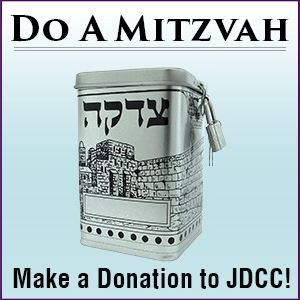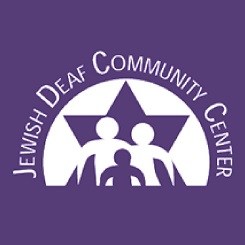Lori Henderson and Mark Howdieshell were recently mentioned in an article in the Cleveland Jewish News for their work in interpreting services at Anshe Chesed Fairmount Temple. “We must be synonymous, simultaneous and beautiful,” says Howdieshell explains. “There is such an interconnectedness between culture and language,” Henderson elaborates, “An interpreter is always simultaneously mediating between the two.” In addition to representing the speaker’s ideas with their hands, an interpreter tries to convey the nuance of the speech intonation, emotion and the personality of the speaker.
Prayer is difficult to interpret, says Howdieshell, citing the first line of the Shema, “Hear, O Israel,” as a perfect example. “Using the sign for ‘hearing’ may not be accurate for a deaf person,” he explains. “A better choice would be signing ‘pay attention’ or even ‘wake up.’ And in the last line, ‘the Lord is One,’ one is also open to interpretation.” Because services are conducted in Hebrew and English, an interpreter has to be acutely aware of linguistic differences as they take in the “source language” and translate it into the “target language.” Even translating English into American Sign Language (ASL) can be daunting. The vocabulary of prayer is replete with abstract words such as “consecrate” and “sovereign.” It can take numerous signs, they explain, to convey the meaning of a single complex word. Even a simpler word, Israel, has two signs – one for the country and a different one when its meaning is “the Jewish people.” Lack of standardization is also a problem for an interpreter at a Jewish service. “In the American deaf community there are no standard signs for holidays like Shemini Atzeret and Lag b’Omer,” says Henderson. “In Israel, they use a different sign for Yom Kippur than we do in America. One of the only reference books which shows signs for Jewish vocabulary was not printed in America; it’s from Britain.” The learning curve for signing a Jewish service was a bit steeper for Howdieshell than it was for Henderson. South Euclid native Henderson is Jewish by birth and attended Park Synagogue. A member of Fairmount Temple, she speaks Hebrew and has taught religious-school classes. Howdieshell has also interpreted at B’nai Jeshurun religious school and Akron Hebrew School; Henderson has translated occasionally at Park Synagogue and for several Orthodox services. Fairmount Temple senior Rabbi Howard Ruben says that when a sign language interpreter is working, he feels it enhances the service even for those in the congregation who hear. “Signing adds a completely different dimension that I, as a service leader, find delightful,” says Ruben. “We imagine our words are heard in only one way, but watching them translated is revealing.”




